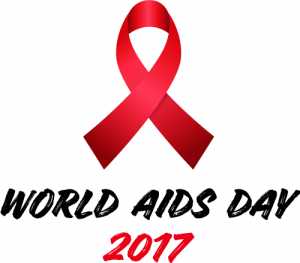More men likely to die of AIDS-related illnesses, UNAIDS warns
-
UNAIDS releases new report
OTTAWA/GENEVA, 1 December 2017—On World AIDS Day, UNAIDS has released a new report showing that men are less likely to take an HIV test, less likely to access antiretroviral therapy and more likely to die of AIDS-related illnesses than women.
The Blind spot shows that globally less than half of men living with HIV are on treatment, compared to 60% of women. Studies show that men are more likely than women to start treatment late, to interrupt treatment and to be lost to treatment follow-up.
“Addressing the inequalities that put women and girls at risk of HIV is at the forefront of the AIDS response,” said Michel Sidibé, Executive Director of UNAIDS. “But there is a blind spot for men—men are not using services to prevent HIV or to test for HIV and are not accessing treatment on the scale that women are.”
In sub-Saharan Africa, men and boys living with HIV are 20% less likely than women and girls living with HIV to know their HIV status, and 27% less likely to be accessing treatment. In KwaZulu-Natal, the province with the highest HIV prevalence in South Africa, only one in four men aged 20–24 years living with HIV in 2015 knew that they had the virus.
In western and central Africa, a region that is struggling to respond effectively to HIV, only 25% of men living with HIV are accessing treatment. When people are not on treatment they are more likely to transmit HIV.
“When men access HIV prevention and treatment services, there is a triple dividend,” said Mr Sidibé. “They protect themselves, they protect their sexual partners and they protect their families.”
The report highlights data from sub-Saharan Africa that show that condom use during sex with a non-regular partner is low among older men, who are also more likely to be living with HIV—50% of men aged 40–44 years and 90% of men aged 55–59 years reported not using a condom.
These data are consistent with studies showing a cycle of HIV transmission from older men to younger women, and from adult women to adult men of a similar age in places with high HIV prevalence.
The Blind spot also shows that HIV prevalence is consistently higher among men within key populations. Outside of eastern and southern Africa, 60% of all new HIV infections among adults are among men. The report outlines the particular difficulties men in key populations face in accessing HIV services, including discrimination, harassment and denial of health services.
Men who have sex with men are 24 times more likely to acquire HIV than men in the general population and in over two dozen countries HIV prevalence among men who have sex with men is 15% or higher. However, recent studies suggest that condom use is dropping in Australia, Europe and the United States of America.
In the United States, for example, the percentage of HIV-negative gay men and other men who have sex with men who engage in sex without using condoms increased from 35% to 41% between 2011 and 2014.
“We cannot let complacency set in,” said Mr Sidibé. “If complacency sets in, HIV will take hold and our hopes of ending AIDS by 2030 will be shattered.”
The Blind spot shows that around 80% of the 11.8 million people who inject drugs are men and that HIV prevalence among people who inject drugs exceeds 25% in several countries. Condom use is almost universally low among people who inject drugs and the percentage of men who inject drugs using sterile injecting equipment during their last drug injection varies from country to country. In Ukraine, for example, the percentage of men who inject drugs who used a sterile needle at last injection was well over 90%, whereas in the United States only around 35% used a sterile needle.
In prisons, where 90% of detainees are men, HIV prevalence is estimated at between 3% and 8%, yet condoms and harm reduction services are rarely made available to detainees.
While HIV testing has been able to reach women, particularly women using antenatal services, the same entry points have not been found for men, limiting uptake of HIV testing among men.
“The concept of harmful masculinity and male stereotypes create conditions that make having safer sex, taking an HIV test, accessing and adhering to treatment—or even having conversations about sexuality—a challenge for men,” said Mr Sidibé. “But men need to take responsibility. This bravado is costing lives.”
The report shows the need to invest in boys and girls at an early age, ensuring that they have access to age-appropriate comprehensive sexuality education that addresses gender equality and is based on human rights, creating healthy relationships and promoting heath-seeking behaviour for both girls and boys.
The report shows that men visit health-care facilities less frequently than women, have fewer health checks and are diagnosed with life-threatening conditions at later stages than women. In Uganda, some men reported they would rather avoid knowing their HIV status and receiving life-saving treatment because they associated being HIV-positive with emasculating stigma. One study in South Africa showed that 70% of men who had died from AIDS-related illnesses had never sought care for HIV.
The report urges HIV programmes to boost men’s use of health services and to make services more easily available to men. This includes making tailored health services available, including extending operating hours, using pharmacies to deliver health services to men, reaching men in their places of work and leisure, including pubs and sports clubs, and using new communications technologies, such as mobile phone apps.
It also urges a supportive legal and policy environment that addresses the common barriers to accessing HIV services, especially for key populations, and can accommodate the diverse needs and realities of men and boys.
The Blind spot shows that by enabling men to stay free from HIV, get tested regularly and start and stay on treatment if HIV-positive, the benefits will not only improve male health outcomes, but will contribute to declines in new HIV infections among women and girls and to altering harmful gender norms.
About author
You might also like
Diabetes in Nigeria projected to rise to 8m by 2045 – Report
The number of people living with diabetes is expected to grow over 100 per cent in Africa with the prevalence of the disease in Nigeria projected to rise to eight
Chevron companies, others, donate education, health facilities to schools and hospital
Two Chevron companies, Texaco Nigeria Outer shelf Limited (TNOS) and Star Deepwater Petroleum Limited and their partner and parties in the OML 132 and Agbami field respectively, have donated a
Police arrest fake medical doctor in Lagos, seal hospital
A 37-year-old fake medical doctor practicing with forged certificates has been arrested by operatives of the Zone 2 Police Command, Onikan, Lagos. The suspect, after his arrested in the Ikorodu






0 Comments
No Comments Yet!
You can be first to comment this post!